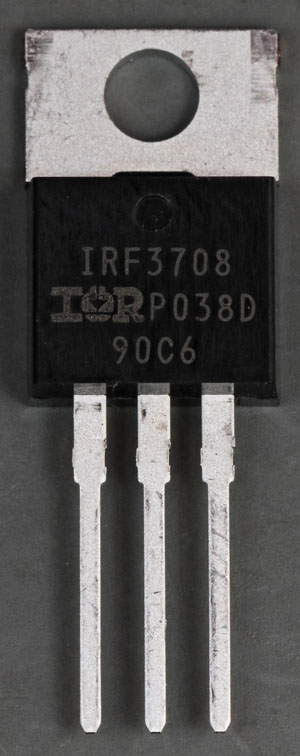
I ordered a IRF3708 at Reichelt and in my view that is a counterfeit part. The IRF3708 is a common power MOSFET which is now obsolete and because of that it´s hard to get genuine parts.
The IRF3708 offers a blocking voltage of 30V and conducts up to 62A permanently with a Rdson of 12mΩ. A peak current of 248A is possible. 4,5V Vgs is already sufficient to turn the MOSFET on almost completely.
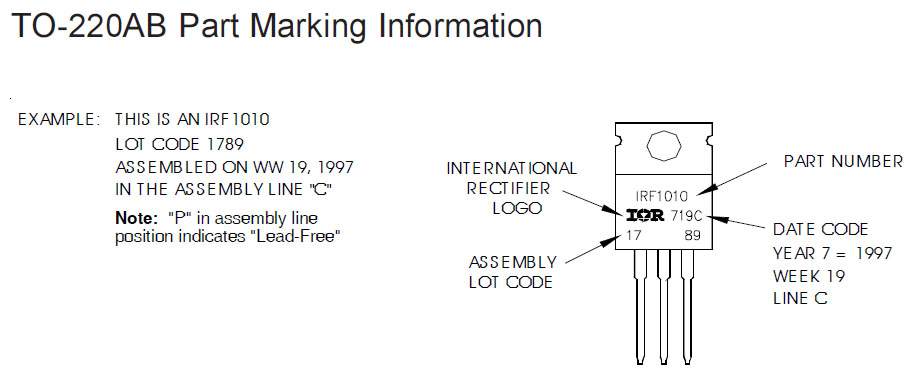
The datasheet contains a drawing that shows how the marking of the IRF3708 should look like.
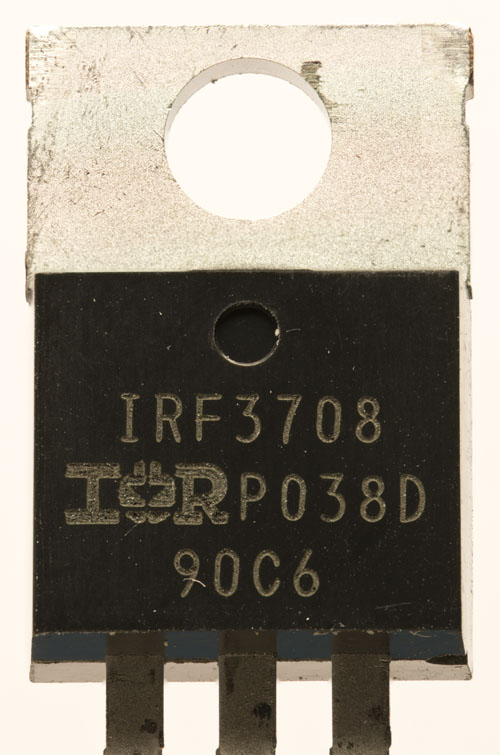
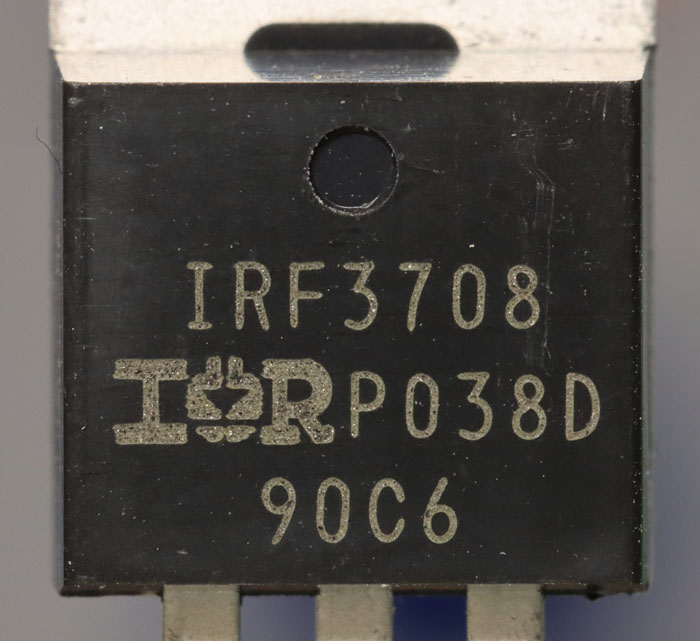
The marking of the present IRF3708 shows two clear deviations compared to the drawing in the datasheet. The characters in the bottom line are not shown in pairs on the left and right side but together in the center. However, the International Rectifier logo is particularly striking. Superficially it is well done but a closer look reveals a cylindrical bulge at the top of the circle that the original logo does not have.
The cuts in the cooling fin are less pronounced than shown in the drawing in the datasheet. However, they are not specified there either.
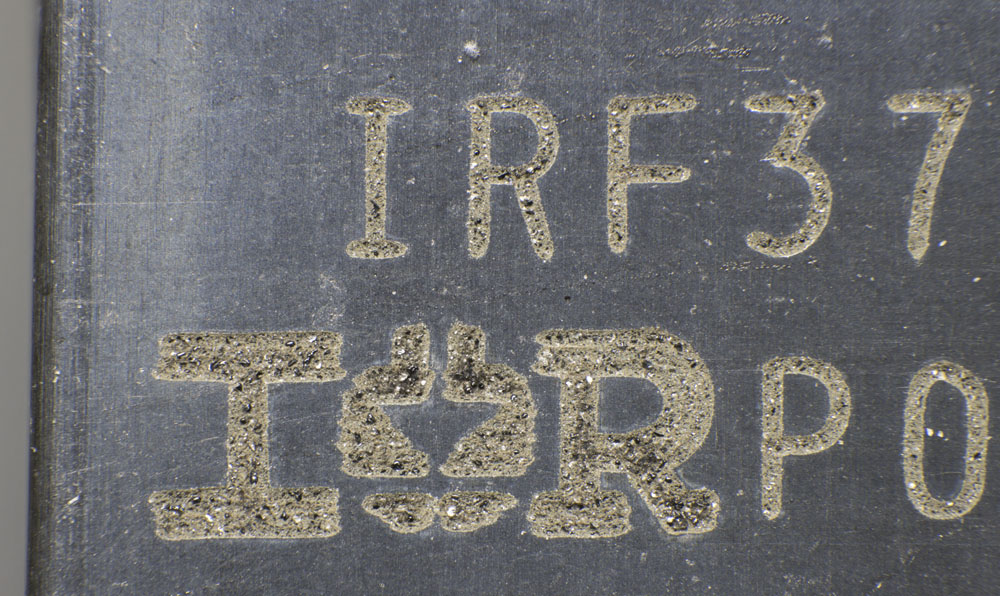
There are no grinding marks on the surface.
In detail the laser inscription looks unclean. The mold material seems to be burned in some places.
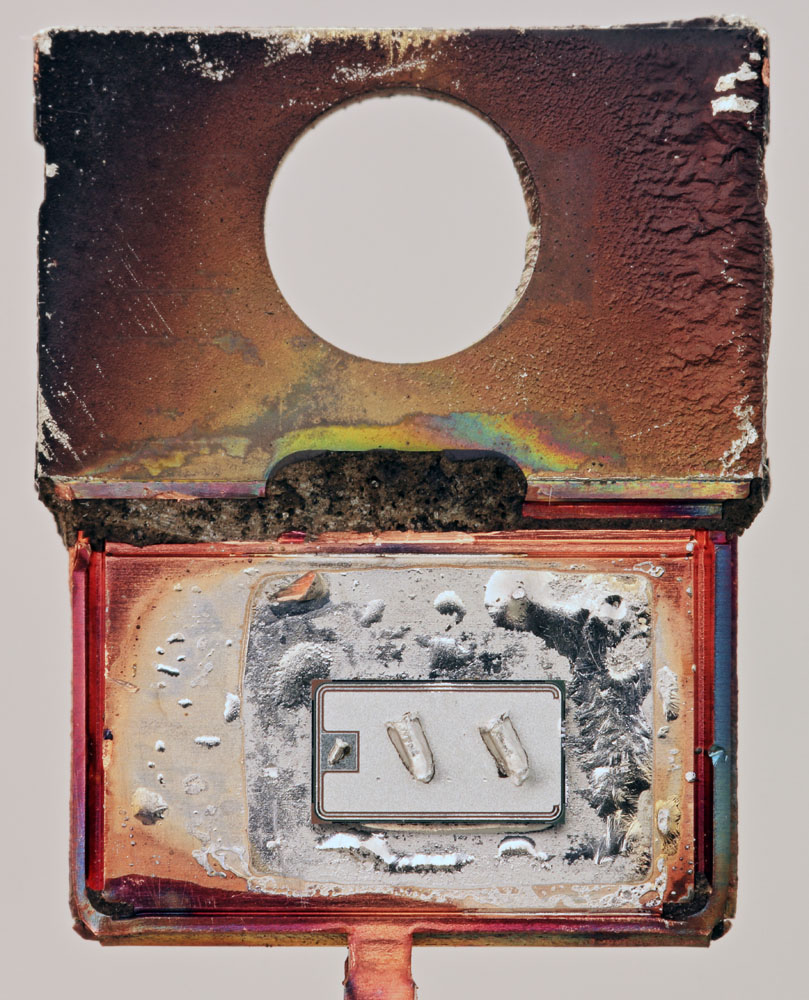
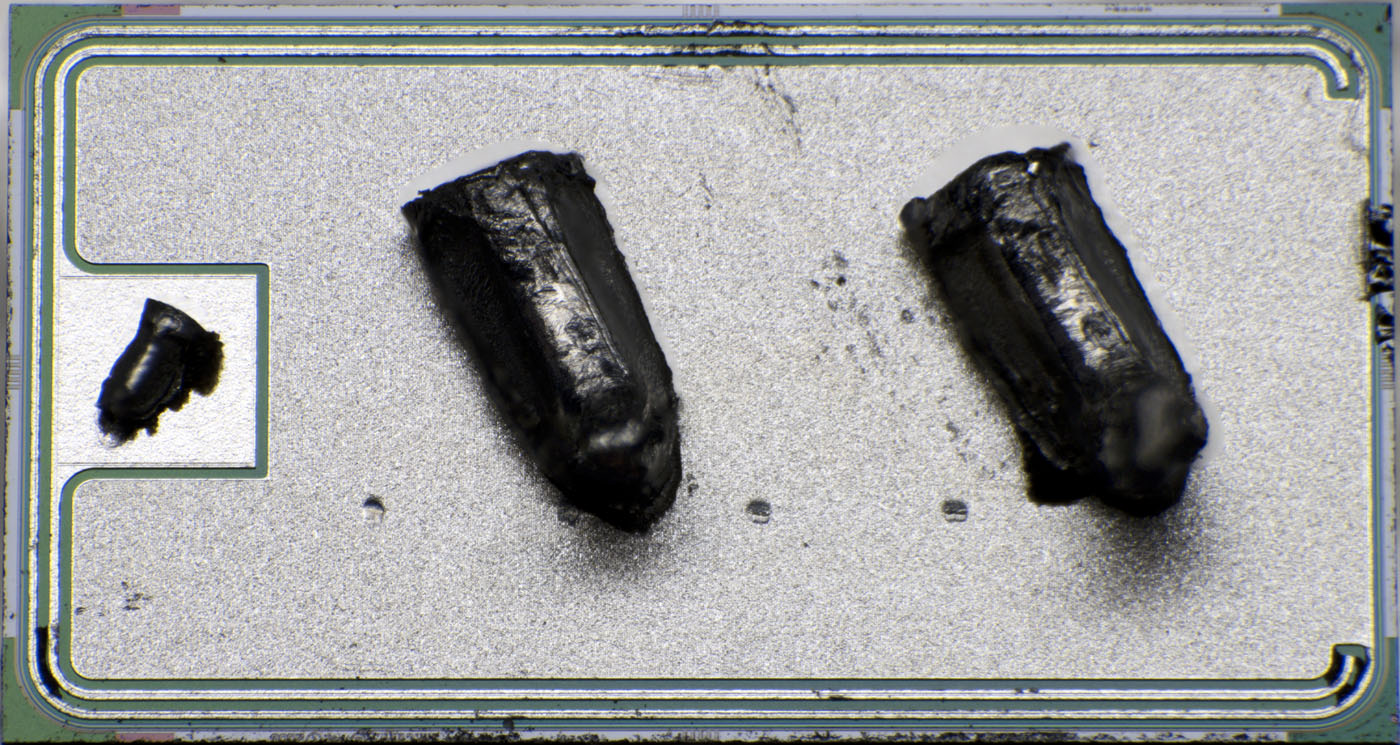
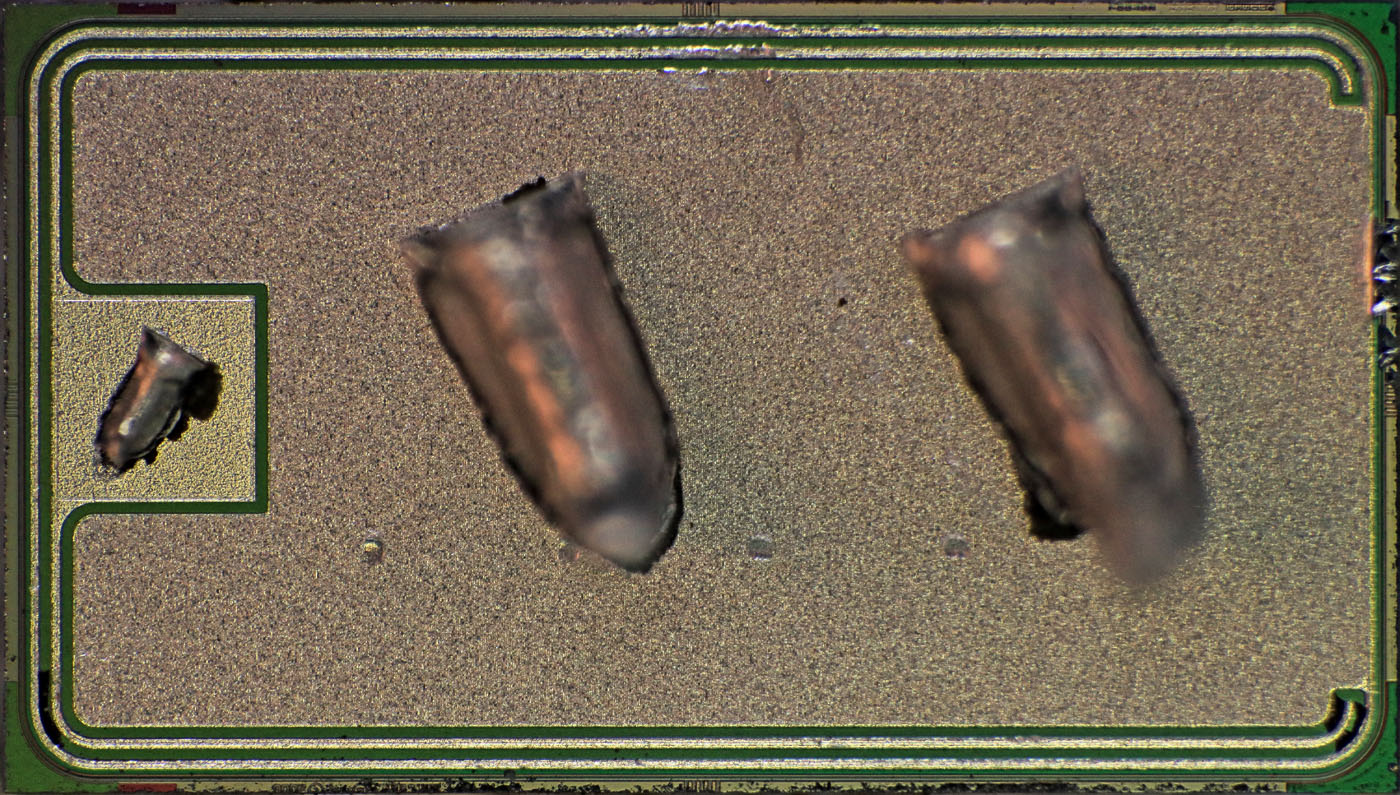
The case contains a die with dimensions of 3,6mm x 2,0mm. Two bondwires contact the upper metal layer. The imprints of test pins can still be seen. The gate potential is distributed over the die with one wire each at the upper and lower edge.

On the bottom edge of the die there are the remnants of some letters. "I.R.CORP." reveals that it is indeed a International Rectifier MOSFET. The same abbreviation is found in the IGBT IRG4PH40K (
https://www.richis-lab.de/Bipolar35.htm). It remains questionable whether it is an IRF3708. The design obviously dates back to the year 2000.

As with the IRG4PH40K mask designations are shown on the upper edge, but these do not allow any conclusion to be drawn about the transistor type.
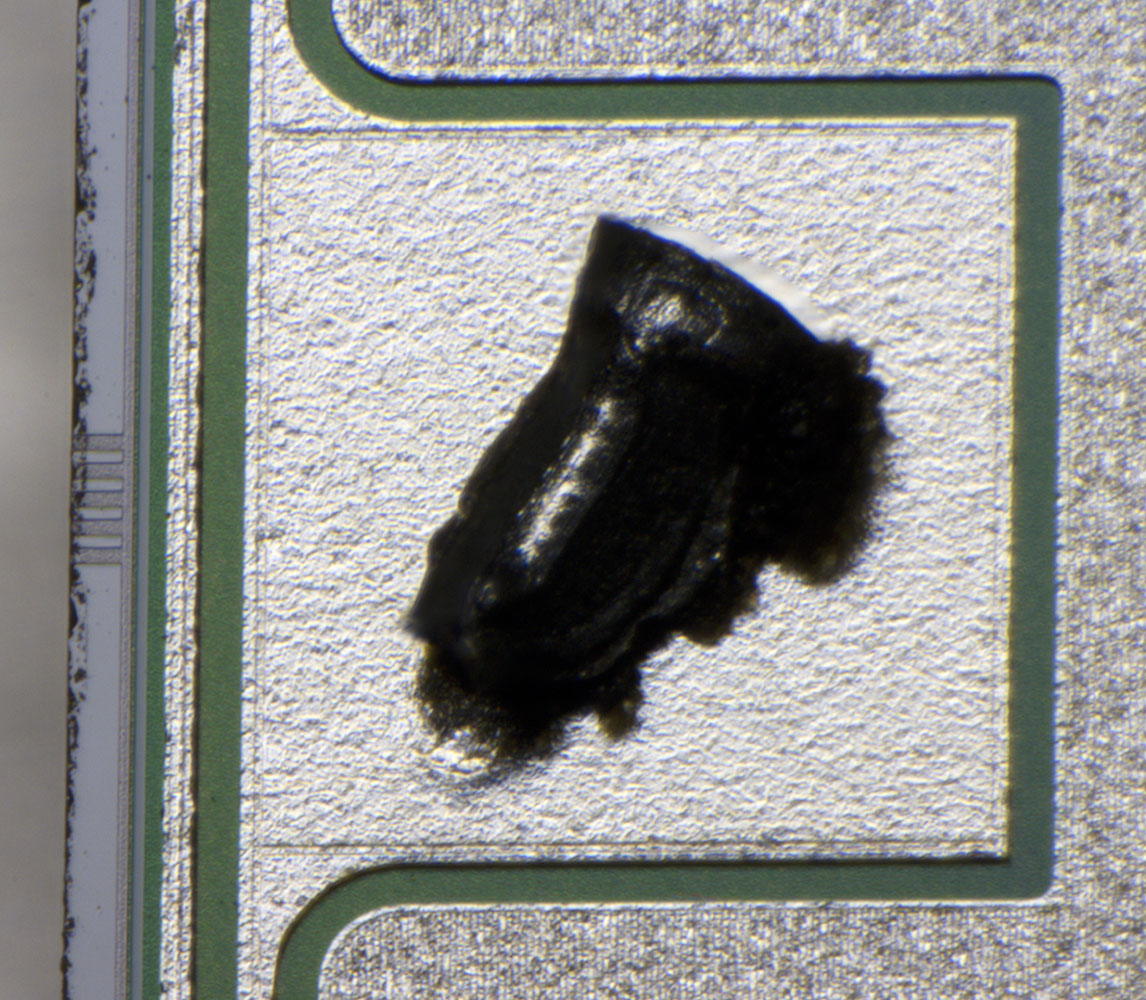
The upper metal layer is relatively thick. Vertical structures are visible on the surface of the source area.
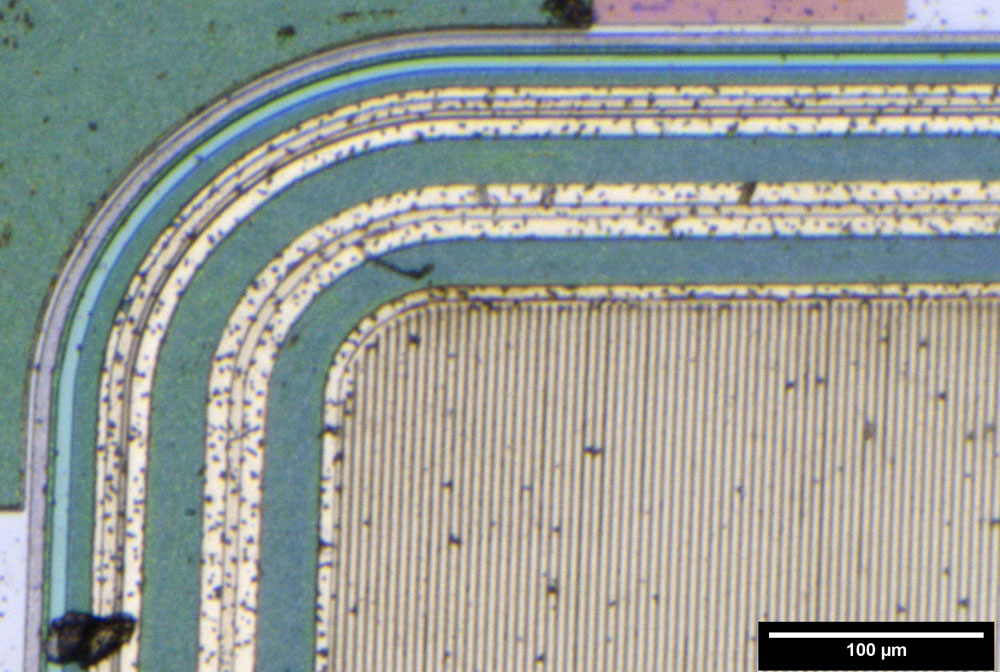
If the metal layer is removed with hydrochloric acid, the structure of the individual MOSFETs becomes more prominent. The bright stripes are about 3µm wide and keep a distance of about 1µm. The bright areas contact the source areas. In the dark areas there are the gate structures.
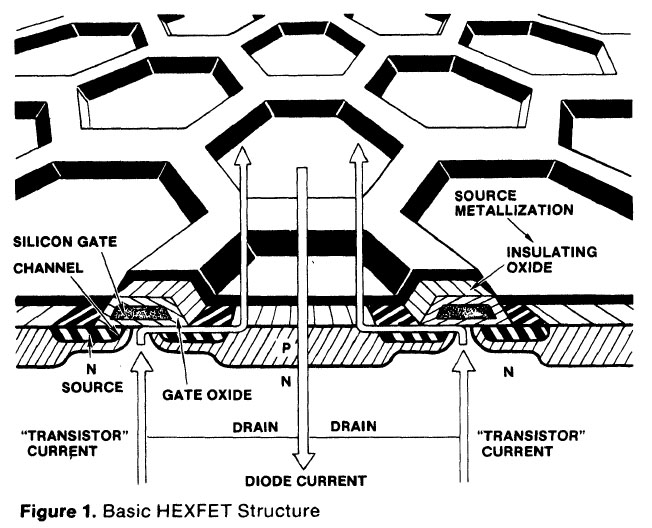
The "International Rectifier HEXFET Databook" shows that a HEXFET like the IRF3708 should have a honeycomb structure. The striped structure that can be seen in the present transistor makes it very likely it´s a counterfeit.
https://www.richis-lab.de/FET23.htm 